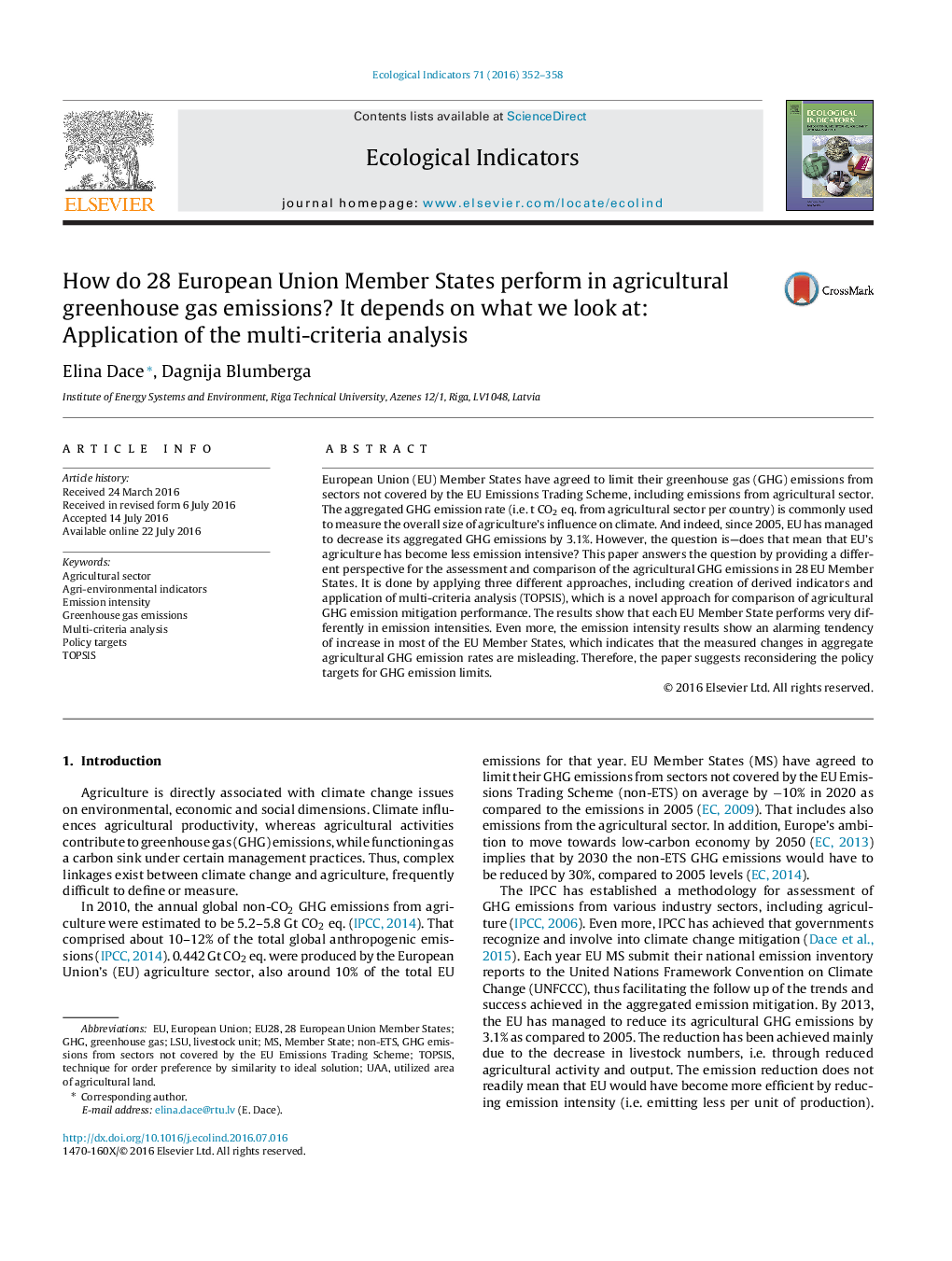| Article ID | Journal | Published Year | Pages | File Type |
|---|---|---|---|---|
| 6292961 | Ecological Indicators | 2016 | 7 Pages |
â¢28 EU MS are compared with respect to agricultural GHG emissions.â¢Three different approaches are applied for the comparative assessment.â¢Weighted normalized emission intensity of agriculture is determined.â¢Measured changes in aggregate agricultural GHG emission rates are misleading.â¢Target values should be set for limiting emission intensity of agricultural activities.
European Union (EU) Member States have agreed to limit their greenhouse gas (GHG) emissions from sectors not covered by the EU Emissions Trading Scheme, including emissions from agricultural sector. The aggregated GHG emission rate (i.e. t CO2 eq. from agricultural sector per country) is commonly used to measure the overall size of agriculture's influence on climate. And indeed, since 2005, EU has managed to decrease its aggregated GHG emissions by 3.1%. However, the question is-does that mean that EU's agriculture has become less emission intensive? This paper answers the question by providing a different perspective for the assessment and comparison of the agricultural GHG emissions in 28Â EU Member States. It is done by applying three different approaches, including creation of derived indicators and application of multi-criteria analysis (TOPSIS), which is a novel approach for comparison of agricultural GHG emission mitigation performance. The results show that each EU Member State performs very differently in emission intensities. Even more, the emission intensity results show an alarming tendency of increase in most of the EU Member States, which indicates that the measured changes in aggregate agricultural GHG emission rates are misleading. Therefore, the paper suggests reconsidering the policy targets for GHG emission limits.
